IWMI-Tata water policy research programme is a collaborative initiative between the International Water Management Institute (IWMI) and the Sir Ratan Tata Trust (SRTT).
2012 is the decadal year of this partnership, and so the right time to present the work done so far and explore what needs to be done further. This discussion around the work done as part of the programme, will be held during the IWMI-Tata Annual Partner's Meet (ITP-APM) in Anand, Gujarat.
These discussions will be based on approximately 200 research studies undertaken.Water policy highlights are pre-publication briefs developed primarily for this discussion. These are being presented on the ITP-APM blog created for this purpose.
This article presents some highlights from and comments on the IWMI-TATA 10-year water policy research programme.
Brief summaries of the highlights from the 2012 IWMI-Tata water policy research programme are given below. These will be added to as they become available.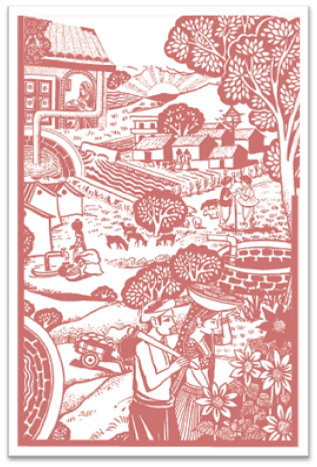
Cities as irrigation systems: An Indian scenario
Author(s): Priyanie Amerasinghe, Mahesh Jampani and Pay Drechsel
Farms downstream of urban areas increasingly rely on partially- or un-treated sewage for irrigation. This paper examines this phenomenon and argues that use of treated sewage for irrigation needs to be factored into urban planning.
Read the ITP-APM summary here.
From small farmers towards prosperous farmers: Four case studies from Gujarat
Author(s): Sneha Lamba
This leads from the earlier discussion about the factors that impact the prosperity of small farmers. This paper discusses four case studies,that have utilized different tools to ensure prosperity. These include contract farming, peri-urban agriculture, integration in poultry-keeping, and diversified cropping.
Read the ITP-APM summary here.
The 2010 Rajasthan state water policy and the urbanization of water
Author(s): Trevor Birkenholtz
This paper looks at the evolution of Rajasthan's state water policy against the backdrop of preceding laws, acts and policies. It also discusses the social and political landscape in which this policy is set, especially that of increasing urbanization.
Read the ITP-APM summary here.
Mapping the hydrological Processes in a community-reconfigured river basin: Some conceptual issues and results from a simple dry run 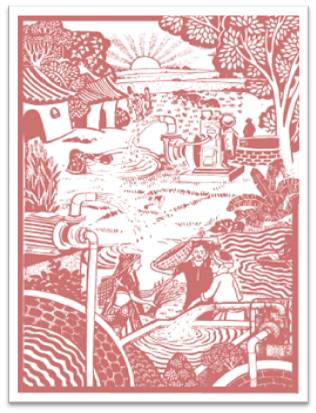
Author(s): Sunderrajan Krishnan and Shilp Verma
Lack of data is a frequently encountered obstacle to hydrological mapping. This attempt in the Meghal river basin uses a variety of alternative sources such as primary data collected by NGOs, and public domain data. This study aims to quantify the impact of small-scale watershed development structures on basin hydrology.
Read the ITP-APM summary here.
Role of decentralized rainwater harvesting and artificial recharge in reversal of groundwater depletion in the arid and semi-arid regions of Gujarat, India
Author(s): R.C. Jain
The number of 'safe' talukas in terms of groundwater depletion has risen from 104 to 155 in Gujarat since 2002. This paper examines this trend and the probable causes. It presents an analysis of the rainfall in Gujarat, its geology, and the various factors that contribute to groundwater recharge.
Read the ITP-APM summary here.
How do small farmers become prosperous? Some observations and questions Author(s): Avinash Kishore, Sneha Lamba, Tushaar Shah and Nidhi Prabha Tewari
Author(s): Avinash Kishore, Sneha Lamba, Tushaar Shah and Nidhi Prabha Tewari
With the small land holdings in most of India, the prosperity of the agricultural sector hinges on the success of its small farmers. This paper examines several cases studies of farmers and farmers' cooperatives that earn significantly more than their peers with the goal of identifying some common points that lead to prosperity. While this is still a work in progress, control over water (as opposed to mere access to irrigation) and diversified crops with a focus on high-value crops seem to be important factors.
Read the ITP-APM summary here.
Assessing the agrarian impact of decentralized water harvesting at the basin scale: A discussion on methodology
Author(s): Shilp Verma and Sunderrajan Krishnan
Water harvesting structures lead to groundwater recharge, which lead to a range of social, economic and health benefits. This paper examines the methodology of analysing these impacts, and separating those that are directly attributable to increased water availability from those that are due to broader changes in the socio-environmental setting. It recommends developing a 'hybrid' method through a varied set of approaches.
Read the ITP-APM summary here.
Impact of metering of tube wells on groundwater use in West Bengal 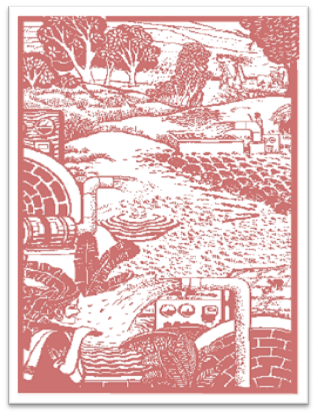
Author(s): J.V. Meenakshi, Abhijit Banerji, Aditi Mukherji and Anubhab Gupta
In 2007, West Bengal State Electricity Distribution Company Limited (WBSEDCL) initiated metering of electric tubewells. Using surveys conducted in 2006, 2007 and 2010, this paper attempts to quantify the impact of this initiative. It noted a decline in electricity use for both the surveyed and control groups. It is only the water consumption during summer that was noticably lower for the study group rather than the control. Despite this, paddy output remained the same, thereby serving as an indicator of over-irrigation before metering was started.
Read the ITP-APM summary here.
Situational analysis of WUAs in Maharashtra
Author(s): SOPPECOM
Since the 1980s, around 4500 water users associations (WUAs) have been registered in Maharashtra, and arein various stages of functioning. Mandatory participatory irrigation management has led to plans to double this number. This paper takes a look at the state of WUAs today. Data on 253 WUAs was analysed for information on formation and handing over, water supply, crop planning, participation, record-keeping, and present condition of infrastructure.
Read the ITP-APM summary here.
Experience of Sir Dorabji Tata Trust and the Allied Trusts in Promoting System of Rice Intensification (SRI): What the results indicate 
Author(s): Biswanath Sinha, Tushar Dash and Ashutosh Pal
The System of Rice Intensification (SRI) is credited with numerous benefits. It is therefore being promoted by SDTT and allied Trusts. This paper examines the lessons learnt from this promotion. It considers the reasons for farmers to take up this method, their adherence to the various SRI principles, the financial viability of this method, and most importantly, the problems with scaling. A basic conundrum of this practice is that despite its visible benefits, few farmers spontaneously embrace this practice and several stop participating after the project period. This paper examines the reasons why, which is an important step to increasing the efficiency of promoting SRI in India.
Read the ITP-APM summary here.
Micro-irrigation subsidies in Gujarat and Andhra Pradesh: Implications for market dynamics and growth
Author(s): Hemant K. Pullabhotla, Chandan Kumar and Shilp Verma
Despite its proven benefits, micro-irrigation has been slow to realise its potential in India. Following the recommendations of the Micro-irrigation task force in 2004, a tiered set of subsidies was put into place for micro-irrigation. The models set up in Andhra Pradesh and Gujarat have been considered the most successful. This paper compares these two models using several parameters and comes up with a set of recommendations for replication elsewhere.
Read the ITP-APM summary here.
Beyond digging and filling holes: Lessons from case studies of best-performing MGNREGA water assets
Author(s): Shilp Verma and Tushaar Shah
In addition to being an employment generation scheme, MGNREGA also seeks to increase water secrity by constructing, repairing and maintaining water harvesting structures. This paper looks at the quality of the constructed structures and suggests means of improving the program efficacy as it pertains to creating durable and efficient water harvesting structures.
Read the ITP-APM summary here.
Strategies of sustainable nutrition to address fluorosis and malnutrition in children
Author(s): Suneetha Sapur
This paper builds on the earlier explanation of the links between vulnerability to groundwater contamination and nutrition by suggesting that the prevalance of juvenile skeletal fluorosis can be greatly reduced by focusing on the nutrition of the mother and child. It also draws links between women's empowerment and their access to food. The paper identifies certain key nutrients of food such as calcium, magnesium and vitamin C as being instrumental in lessening the onset of fluorosis, but maintains that a balanced diet and adequate all-over nutrition is essential.
Read the ITP-APM summary here.
Hydro, hydrogeological constraints to managed aquifer recharge in the Indo Gangetic plains
Author(s): S.A. Prathapar, B.R. Sharma and P.K. Aggarwal
Increasing groundwater withdrawals are leading to declining groundwater levels. This has led to a surge of aquifer recharge activities despite low availability of land and rainfall. This paper assess the efficacy of these measures. It states that aquifer recharge is inextricably lnked to underlying geology, and hence any aquifer reharge plan needs to take geological characteristics into consideration during the feasibility study.
Read the ITP-APM summary here.
Safe water and nutritional improvements: Opportunities for long-term health advancements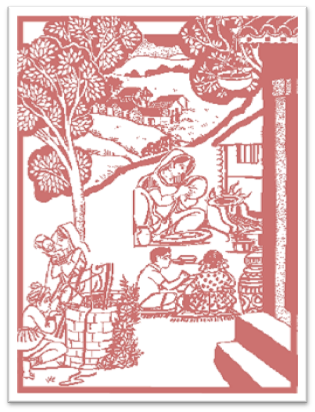 Author(s): Sunderrajan Krishnan and Rajnarayan Indu
Author(s): Sunderrajan Krishnan and Rajnarayan Indu
The lives of a significant part of the population in India are severely compromised due to water contamination. Several contaminants such as fluoride, arsenic and iron are geogenic, though they may be concentrated by increased withdrawal. Most mitigation measures focus on the provision of treated water. This paper brings out the link between nutrition and vulnerability to groundwater contamination. The paper highlights that here too, it is the poor who suffer the most due to contaminated groundwater. In addition it makes a strong case for including nutrition as part of the mitigation strategy in areas susceptible to groundwater contamination.
Read the ITP-APM summary here.
Rural electrification for a second green revolution in West Bengal
Author(s): Aditi Mukherji
West Bengal, unlike other parts of the country, does not yet suffer from declining groundwater levels. While water is abundant, the energy required to access that water is not readily available. A large part of the problem is the administrative gauntlet a farmer needs to run before he/she can install a tubewell. This is examplified in the lack of sanctions for electricity connections for agricultural tube wells and other restrictive groundwater policies.In 2011, the government relaxed the permissions required for accessing groundwater in 'safe' groundwater blocks, and also resolved to give electricity connections against a fixed connection fee. These policies have the potential to spur agricultural growth in the area.
Read the ITP-APM summary here.
Andhra Pradesh Farmer Managed Groundwater Systems (APFAMGS): A reality check
Author(s): Shilp Verma, Sunderrajan Krishnan, Ankith Reddy V. and K. Rajendra Reddy 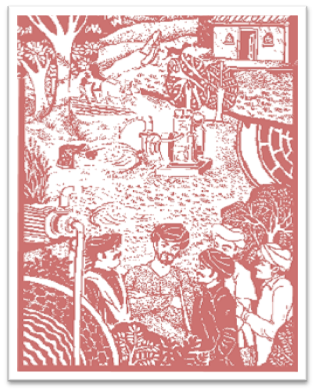
The Andhra Pradesh Farmer Managed Groundwater Systems (APFAMGS) aimed at facilitating self-regulation of groundwater use by farmers by educating them about hydology, aalysis of data, water budgeting and the impact of improper use. At the time of implementation and shortly after, it was considered a success. This paper revisits the areas that is was implemented and examines the situation some years after the end of the project.In all but a few cases data collection and public display is on the decline, with farmers reverting to their traditional methods of decision making. It was found that with the withdrawal of NGOs and their encouragement, the creation of crop water balances, and functioning of institutions re declining. The paper details the lessons learnt from the model proect.
Read the ITP-APM summary here.
Managing energy-irrigation nexus in India
Author(s): Aditi Mukherji, Tushaar Shah and Mark Giordano
The supply of unmetered power to farmers has led to excessive usage and consequently, declining water levels. This paper examines the solutions being implemented by state governments to address the inefficient use of energy and irrigation. It concludes that 'textbook solutions' are not feasible in the current social setting, and recommends negotiable and politically acceptable solutions. This data-rich paper also presents statistics on current groundwater and energy use.
Read the ITP-APM summary here.
Solar irrigation pumps: The Rajasthan experience
Author(s):Nidhi Prabha Tewari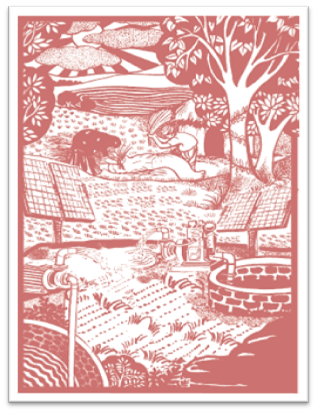 In 2012, the Rajasthan government initiated a 86% subsidy for installing irrigation pumps the run on solar energy. This was designed for selected districts with a predetermined quota. This paper examines the method of administering subsidy, the demand for pumps and administrative issues including determining eligivility of both farmers and supply firms, and the logistics of delivering these pumps.The performance of these pumps, as also the other incidental benefits to farmers are discussed in detail. The paper remarks on the use of these pumps to draw groundwater rather than water from surface ponds. It recommends that drip irrigation be made a pre-requisite for subsidy in order to minimize its impact on the already-stressed groundwater in Rajasthan.
In 2012, the Rajasthan government initiated a 86% subsidy for installing irrigation pumps the run on solar energy. This was designed for selected districts with a predetermined quota. This paper examines the method of administering subsidy, the demand for pumps and administrative issues including determining eligivility of both farmers and supply firms, and the logistics of delivering these pumps.The performance of these pumps, as also the other incidental benefits to farmers are discussed in detail. The paper remarks on the use of these pumps to draw groundwater rather than water from surface ponds. It recommends that drip irrigation be made a pre-requisite for subsidy in order to minimize its impact on the already-stressed groundwater in Rajasthan.
Read the ITP-APM summary here.
A review of international experience in managing energy irrigation nexus
Author(s): Aditi Mukherji and Tushaar Shah
This paper examines the policies that govern groundwater and electricity usage in India and other countries that depend largely on groundwater use. India and China are diiscussed together as they share high dependence on groundwater, high population density and small landholdings. Spain and Mexico share high per capita incomes, a strong farmer's lobby and a comparatively low dependence on groundwater, and are discussed jointly. The experiences in Pakistan and Bangladesh in dealing with the energy issues related to groundwater are also narrated.
Read the ITP-APM summary here.
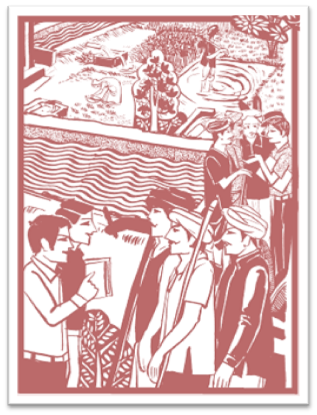 Maharashtra Water Resources Regulatory Authority: An Assessment
Maharashtra Water Resources Regulatory Authority: An Assessment
Author(s): SOPPECOM
This paper analyses the functioning of the Maharashtra Water Resources Regulatory Authority (MWRRA) against its stated objectives by analysing the impacts in WUAs in Waghdad and Kukdi. It postulates that while the MWRRA has fulfilled its tarriffs functions, it has not fully realised its potential. The conjunctive use of groundwater is a major factor in water consumption in command areas. This is not acknowledged in the present system. With governance moving away from the project area, uncertainity is also increasing.
Read the ITP-APM summary here.
Efficacy of employment generation programs in providing water security: An assessment of Mahatma Gandhi National Rural Employment Guarantee Scheme (MGNREGS) in Madhya Pradesh
Author(s): R.P.S. Malik
One of the goals of MGNREGS is to create assets to create water security. Accordingly a large number ofthe works permitted are water harvesting and storage structures. This paper analyses the creation of assets regarding their durability and usability. The quality of the water structures has been found to be satisfactory. However, utilization of these resources is limited for various reasons including lack of pumping equipment, electricity, and access to markets.
Read the ITP-APM summary here.
Chasing the paper trail in an irrigation system: Guidance for third party verification for the release of incentives under the national irrigation management fund
Author(s): Nisha Nair, Raja Panchal and Rahul Agrawal
The National irrigation management fund proposes to offer incentives for irrigation service fees collected based on third party verification of irrigation agencies' claims. This paper presents the results of a study conducted of the ISF assessment and collection process in 4 states. It also provides recommendations for third party evaluation, especially that of a suitable sampling plan.
Read the ITP-APM summary here.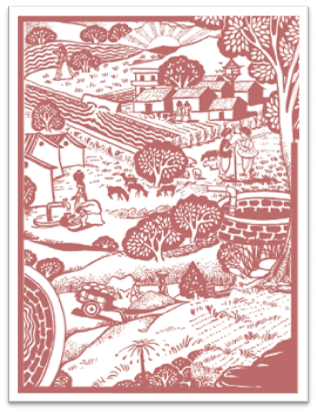
Wastewater irrigation in Gujarat: An exploratory study
Author(s):Alka Palrecha, Dheeraj Kapoor and Teja Malladi
Sewage farming, as it is called by farmers, is the use of untreated or partially treated wastewater for irrigation. This paper explores the prevalance of wastewater use and also the benefits and threats posed by this practice. Wastewater reuse conserves fresh water and nutrients, is inexpensive, and reduces pollution of water systems. The paper brings out several recommendations by farmers to increase the benefits of this system, one of which is planning STPs to maximise the amount of land that can be cultivated
Read the ITP-APM summary here.
Agricultural growth and rural dynamism: Why is Saurashtra firing on all cylinders while Vidarbha is limping along?
Author(s): Tushaar Shah, Yashree Mehta and Vivek Kher
Saurashtra and Vidharba were both stagnating in agricultural malaise in the 1990s. Since then, Saurashtra has begun to grow at an accelerated pace, far outstripping Vidharba. This paper examines the reasons behind this phenomenon and suggests measures that need to be adopted by the Maharashtra government. These include competitive milk procurement, promotion of irrigated cotton,provision of reliable farm power, and a focus on decentralised groundwater recharge.
Read the ITP-APM summary here.
Gender equity, water and food security in drought prone areas: A case study of Odisha and Gujarat Author(s):Basanta K. Sahu
Author(s):Basanta K. Sahu
Drought is stressful for all, but some sections of society are more vulnerable than others. This paper takes a look at how gender inequities are worsened by lack of food security. It also points out that despite women's active participation in land and water based activities, they rarely are involved in decision making or ownership. It suggests policy changes that may enhance womens access and resources.
Read the ITP-APM summary here.
An experiment in solar power based community tubewells for irrigation in Nalanda district, Bihar
Author(s): Rakesh Tiwary
Poor electricity supply and the high cost of diesel are the main stumbling blocks to irrigation in Bihar. To counter this, the state government has fitted 34 tubewells in 25 blocks of Nalanda district with solar-power based pumps. This paper reports on the benefits of such a program.The systems in place for operation, maintenance and collection of dues are also explained.
Read the ITP-APM summary here.
 Solar-powered pump irrigation and India’s groundwater economy: A preliminary discussion of opportunities and threats
Solar-powered pump irrigation and India’s groundwater economy: A preliminary discussion of opportunities and threats
Author(s):Tushaar Shah and Avinash Kishore
The poor reliability of electricity and the falling costs of solar technology are making solar pumps increasingly attractive. This paper explores this phenomenon and suggests that this is not merely an energy issue but also a water issue. Steep fixed rates and low operational costs make it ideal for service providers. This will lead to increased exploitation of groundwater, which might prove to be damaging in already over-exploited areas.The paper also explores alternative subsidy designs.
Read the ITP-APM summary here.
Canal irrigation conundrum: Applying contingency theory to irrigation system management in India
Author(s):Tushaar Shah
Canal irrigation is becoming rapidly unsustainable with poor efficiency and even poorer returns. This can largely be attributed to the three main components of an irrigation system, namely: management agency,farmers and the physical infrastructure. The paper argues that the basic 'state' of these irrigation systems has undergone a major change and identifies various contingencies to be explored. It further states that benchmarking is necessary for reforms and identifies the research points that need to be answered to put into place an effective benchmarking system
Read the ITP-APM summary here.
Fencing women in water user associations: An appraisal of gender strategy for participatory irrigation management in Tamil Nadu 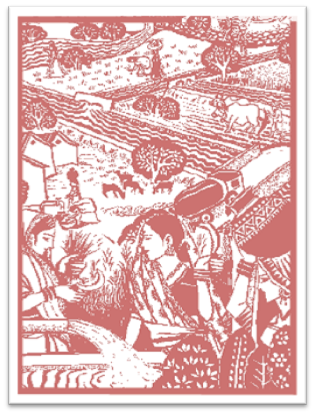 Author(s): K. Gulam Dastaghir
Author(s): K. Gulam Dastaghir
Institutional reforms aim to increase participation of women in irrigation. This paper examines the impact of these reforms while acknowledging one important but usually neglected reality- that women do not comprise a homogenous community. The paper examines the management of Sathanur Irrigation System and the participation of various women, to arrive at the factors that influence participation in irrigation institutions.
Read the ITP-APM summary here.
How WUAs facilitate direct groundwater regulation: A case study of Minqin county, China
Author(s): Eefje Aarnoudse, Bettina Bluemling, Philippus Wester, Wei Qu
Minqin lies in the delta of a landlocked river in the Gobi desert. Irrigation is indispensible in this area. Recent changes in the crop pattern have led to an increase in groundwater utilisation which subsequently threatened the area. This paper documents the success of a government-led groundwater management plan at the basin level. This plan depended heavily upon water users' associations, water permits, and 'water accounts'.
Read the ITP-APM summary here.
Addressing social and gender equity in the water sector
Author(s): Sneha bhat, Ravindra Pomane, Seema Kulkarni
Most discussions around 'water scarcity' fail to highlight that this scarcity is skewed towards those who are vulnerable in terms of caste, gender, class, location. This paper analyses the social composition of 'scarcity'and the conflicts that arise from it. It emphasises that the various domains that the water sector is composed of (such as the household, the village etc) are non-homogenous and have potential for both conflict and cooperation. This reality shapes the phenomenon of water scarcity and needs to be understood.
Read the ITP-APM summary here.
Winds of change in Sri Lanka's north central dry zone
Author(s): Tushaar Shah, Madar Samad, Ranjith Ariyaratne, K Jinapala
Rice irrigation in Sri Lanka using small interconnected tanks is perhaps the only extant ancient rice irrigation civilization. This paper explains the hydrological and social mechanisms of this irrigation system. This system, especially the irrigation institutions are facing accelerated change. Their reinvention as Farmers' organizations and the nodal agencies for distribution of subsidized fertilisers gave them a fresh lease of life, which is now threatened by policy change. This is compounded by he increase in groundwater irrigation.
Read the ITP-APM summary here.
Potential and challenges in up-scaling micro-irrigation in India: Experiences from nine states
Author(s): K Palanisami and S Raman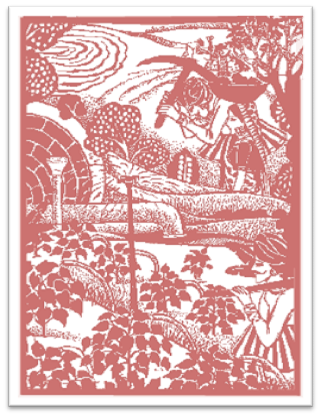
This paper aims to fill a research gap in India by focusing on adoption patterns of micro irrigation and the economic impacts on farm households.This study is based on primary and secondary data collected from nine states. It seeks to establish a relationship between landholding size, area under micro-irrigation, and net benefits. Farmers' suggestions for making micro irrigation more accessible are also noted.
Read the ITP-APM summary here.
Whose water is it anyway? Evolving rights over canal water in Guhai irrigation system, Gujarat
Author(s): Meghna Brahmachari and Seema Dave
This paper addresses a well-recognised injustice in canal irrigation- that all benefits are governed by topography. The lower-lying areas get the benefits of the canals while the ridges are quite literally left high and dry. However, these 'non-command' farmers are beginning to address this by using pumps and siphons as is illustrated in the case of Guhai irrigation system in Gujarat. The authors discuss the pros and cons of this phenomenon which include both higher productivity and an invalidation of the canal design principles
Read the ITP-APM summary here.
Irrigation, economic benefits and women: Evidence from two case studies in Andhra Pradesh and Madhya Pradesh
Author(s): Amita Shah and Seema Kulkarni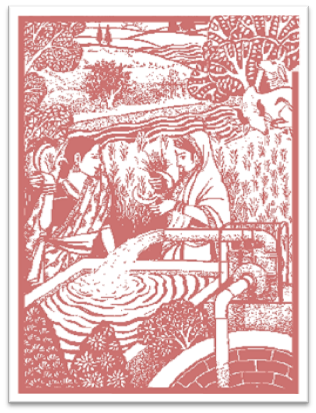 Poverty and gender bias are not the same social phenomenon and cannot be addressed using the same measures, clarifies this paper at the onset. It goes on to reveal the observations from studies in Andhra Pradesh and Madhya Pradesh that explore how watershed development has affected the status of women. Some indicators- such as time taken for water and participation in commitees- show positive changes. However, major decisions such as cropping patterns are still taken by men. Similarly, there is a perception that watershed development has benefited the more powerful in the village and not changed the power balance. The paper ends by suggesting ways for policies, project implementation and academics to address the water-poverty-gender issue.
Poverty and gender bias are not the same social phenomenon and cannot be addressed using the same measures, clarifies this paper at the onset. It goes on to reveal the observations from studies in Andhra Pradesh and Madhya Pradesh that explore how watershed development has affected the status of women. Some indicators- such as time taken for water and participation in commitees- show positive changes. However, major decisions such as cropping patterns are still taken by men. Similarly, there is a perception that watershed development has benefited the more powerful in the village and not changed the power balance. The paper ends by suggesting ways for policies, project implementation and academics to address the water-poverty-gender issue.
Read the ITP-APM summary here.
Irrigation modernization, Chinese style: Report on a field visit to Shijin irrigation system, Hebei province
Author(s): Tushaar Shah, Khalid Mohatadulla and Asad Qureshi
This paper reports the observations from a trip to China's irrigation systems made by a group of farmers and IWMI researchers. China has taken upon itself to resurrect its irrigation system. Along with a massive budget, the main focus is on lining canals, setting up management systems, and metering water use. The paper examines these for their viability and draws lessons for India from this experience.
Read the ITP-APM summary here.
The National River Linking Project of India: Some contentious issues
Author(s):Upali Amarasinghe
The national river linking project has come back into national focus with the Supreme Court injunction to complete it by 2016. However, its critics continue to emphasise the many flaws in this project. The author of this paper examines three of the most commonly stated objections: perceived' surplus' in the donor basins, reasons for justification, and alternative options of water management. The paper exhaustively examines these objections and among other things, points out that 60% of crop area is rainfed and the river linking project will not be reaching a large part of this land. It also points out the need and benefits for increasing water efficiency.
Read the ITP-APM summary here.
Performance of participatory irrigation management: A study of two water users associations in Anand district of Gujarat
Author(s):Sonal Bhatt
This paper presents two case studies of water users associations that are reputed to be functioning well. It examines the probable causes for this functioning, including incentives for WUA membership, outsourcing of fee collection, and expansion of the scope of the association's activities. The applicability of these lessons to other associations is also examined.
Read the ITP-APM summary here.
Redefining Irrigation as if Gender Mattered
Author(s): Seema Kulkarni 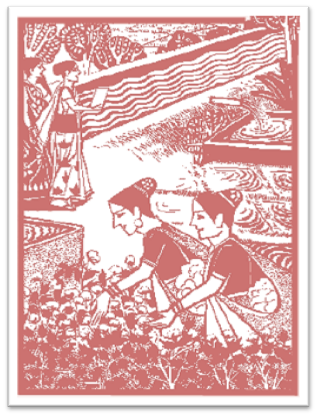 Women are conspicous by their absence in all irrigation-related discussions, whether at the community level or in the bureaucracy. This paper draws upon two previously published studies to examine this phenomenon. It investigates the causes that have led to the absence of women in water users' association (land ownership, partriachal systems in the village, perceived gender roles, etc) and suggests mechanisms to overcome these. Similarly, the issues faced by women engineers in the bureaucracy and the patronising they have to endure are documented.
Women are conspicous by their absence in all irrigation-related discussions, whether at the community level or in the bureaucracy. This paper draws upon two previously published studies to examine this phenomenon. It investigates the causes that have led to the absence of women in water users' association (land ownership, partriachal systems in the village, perceived gender roles, etc) and suggests mechanisms to overcome these. Similarly, the issues faced by women engineers in the bureaucracy and the patronising they have to endure are documented.
Read the ITP-APM summary here.
Accelerated sectoral development program: What can water sector learn from power sector?
Author(s): Tushaar Shah and Mahendra Singh
The accelerated irrigation benefits program has failed to acheive its goals despite being massively funded. It has also not been evaluated by an independent agency. This paper compares the water and power sectors. It points out the effectiveness of the Acccelerated power development and reforms program in turning around the sector and argues that the same principles be applied to the irrigation program. Some of these successful principles are aggressive metering, capacity building of staff, and a reward mechanism that provided incentive to states.
Read the ITP-APM summary here.
Irrigating with Arsenic contaminated groundwater in the Bengal delta: A review of mitigation options
Author(s): Narmadha Senanayke and Aditi Mukherji
Irrigation with groundwater contaminated by Arsenic threatens the health of those who consume the produce. This exposure is difficult to control or quantify. Ceasing all irrigation is also not an option. This paper assesses various agricultural methods that address mitigation of arsenic contamination of crops.These interventions can be classified as those that address water management practices, soil remediation, cooking methods, paddy cultivars, crop patterns and nutritional supplements.
Read the ITP-APM summary here.
Ten things to learn from the dug well recharge programme
Author(s): Sunderrajan Krishnan
The national dug well recharge programme offered a subsidy of Rs. 4200/- to utilise wells not just for pumping, but also for recharge. However, this programme failed to meet the expected results. This paper examines the reasons for this failure and presents 10 lessons learnt from this effort.
Read the ITP-APM summary here.
Unlocking value out of India's rainfed farming areas
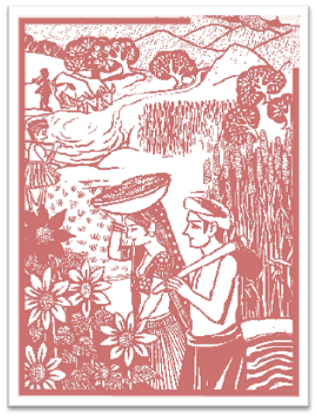 Author(s): Bharat Sharma
Author(s): Bharat Sharma
The 86 million hectares in India that are under rainfed agriculture are vulnerable to variation in rainfall. Supplementary irrigation, delivered by means of decentralised rainwater harvesting structures, are the key to reducing this vulnerability. This paper points out the benefits that can be realised by such a strategy and suggests measures that can be applied to realise it.
Read the ITP-APM summary here.
Read the ITP-APM summary here.
Labor market dynamics in post-MGNREGA rural India
Author(s): Shilp Verma and Tushaar Shah
 In addition to offering employment security, the Mahatma Gandhi National Rural Employment Guarantee Act (MGNREGA) also aimed to alter the working of rural labour markets, specifically by reducing distress migration and adding to the purchasing power of the labour class.
In addition to offering employment security, the Mahatma Gandhi National Rural Employment Guarantee Act (MGNREGA) also aimed to alter the working of rural labour markets, specifically by reducing distress migration and adding to the purchasing power of the labour class. Read the ITP-APM summary here.
The System of Rice Intensification (SRI) promises increased yields, reduced water consumption and resilient crops. This paper presents the results of a survey of 2234 farmers across 13 states. It presents data relating to SRI adoption, costs, returns and constraints. It proposes that SRI practices be tailored for different regions.
Read the ITP-APM summary here.
Organizational reform in Gujarat's electricity utility: Lessons for revitalizing a bureaucratic service delivery agency
Author(s): Tushaar Shah, Madhavi Mehta, Gopi Sankar and Shankar Mondal
Gujarats power utilities have been transformed from a nearly bankrupt electricity board offering poor services into a model public utilities entity. This paper examines the process by which this was achieved and also the replicability of this process for other states
Read the ITP-APM summary here.
Poor state of irrigation statistics in India: The case of wells and tube wells
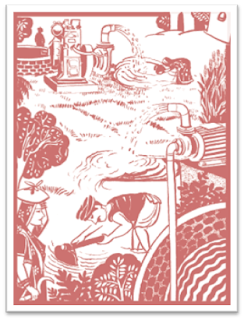 Author(s): Stuti Rawat and Aditi Mukherji
Author(s): Stuti Rawat and Aditi Mukherji
Declining groundwater levels make it necessary to formulate plans and policies conducive to water conservation. Such planning depends on an accurate assessment of groundwater use today. The authors prove that irrigation statistics in India do not have the level of accuracy required for such policy planning and make a strong case of improving data collection systems.
This paper compares data sets for electric pump sets, diesel pump sets, and number of wells and tubewells in India available with Minor Irrigation Census (MIC), Agricultural Census (Ag), Input Survey (InS) and State Electricity Boards (SEBs).
Read the ITP-APM summary here.
Coping with seasonal peak in power demand for irrigation: Pros and cons of temporary farm power connections in Madhya Pradesh and West Bengal
Author(s): Tushaar Shah, Paratha Sarathi Banerji, Ayan Roy and Shashank Singhania
The seasonal surge in power demand for irrigation (the season varies with region) results in increased load on transformers and power theft. Madhya Pradesh and W.Bengal have begun to offer temprary single season connections to cope with this increase, which has led to bumper crops in these states.
This paper assesses the viability of this approach. It also points out that permanent power connections are tantamount to permanenent groundwater rights. This mechanism of temporary connecions leads to less power theft, less damage to infrastructure and possible means of groundwater rationing.
Read the ITP-APM summary here.
Incentivizing irrigation departments to collect irrigation service fee: Will the 12th Plan proposal for National Irrigation Management Fund (NIMF) work?
Author(s): Meghna Brahmachari

Read the ITP-APM summary here.
How did West Bengal bell the proverbial cat of agricultural metering? The economics and politics of groundwater
Author(s): Aditi Mukherji and Arijit Das
This paper takes the earlier discussion further by detailing the process in which West Bengal began metering agricultural tube wells and the reasons it worked in that state. Small land holdings were an important factor as metered farmers actually paid less as compared to those paying a flat rate. The influence of the urban opinion on groundwater use in terms of perceived scarcity and arsenic contamination is discussed. The paper ends by summing up the lessons that other states can learn from the West Bengal experience.
Read the ITP-APM summary here.
The other side of India's electricity-groundwater nexus: The disruptive impact of tube well irrigation on rural development in western India
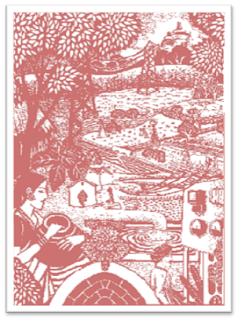 Author(s): Nisha Nair and Tushaar Shah
Author(s): Nisha Nair and Tushaar Shah
The power-supply environment (PSEn)is characterised by such parameters as hours when power is available, voltage fluctuations, interruptions etc. The rural power supply environment in India is poor nad forms a road block to the delivery of essential services.
This paper, based on an IRMA survey of 1400 consumers in western India explores the relationship between subsidised tariff (including free power supply to farmers) and poor rural PSEn. The effect of this policy on groundwater resources in India is also explored. Possible mechanisms to mitigate 'power anarchy' such as feeder separation, HVDS, and pricing based on use are discussed.
Read the ITP-APM summary here.
Related Links
/articles/highlights-10-year-water-policy-research-programme-international-water-management
